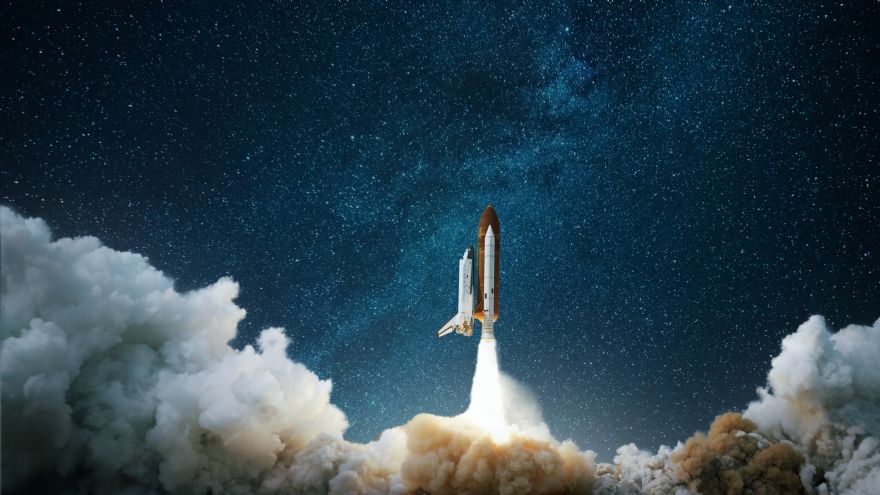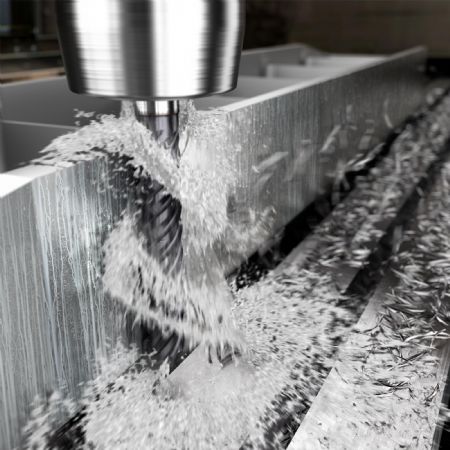
A new record for the number of people in space all at once was set in May 2023, with 20 people simultaneously in orbit and the missions taking them including: Virgin Galactic’s Galactic 01, which marked the company’s first commercial suborbital spaceflight mission for the company; and SpaceX preparing for its first commercial spacewalk.
Delving into this subject further, William Durow —
Sandvik Coromant’s global engineering project manager for space, defence, and aerospace — said: “From space tourism to rocket innovation, man is diving deeper into the ‘great black’. We have seen several giant leaps for mankind in recent years. For example, the European Space Agency’s JUpiter ICy moons Explorer (JUICE) mission. This was launched in April 2023 and is set to arrive in the Jovian System in 2030; it will then take 3.5 years to observe Jupiter’s three moons. SpaceX had planned about 100 launches for 2023, and NASA’s OSIRIS-Rex returned to Earth in September 2023 — to name just a few projects.
“Ensuring success for such missions requires careful planning, preparation, and execution. Moreover, materials used in space applications must withstand some extreme conditions, including vacuum, radiation, thermal cycling, and micrometeoroid impacts. Materials must also withstand the high pressures and stresses experienced during launch and in-flight, as well as intense heat during a spacecraft’s re-entry to the Earth’s atmosphere. So, external materials must work to stop the vehicle burning up, while other components — such as rocket nozzles — must also be made from heat-resistant materials.
“Weight is also a consideration, as the more the rocket itself weighs, the less payload — including satellites, scientific instruments and crew — it can carry into space. Popular materials for many space applications include heat-resistant super alloys (HRSAs). These materials can maintain their mechanical properties and structural integrity at very high temperatures, often exceeding 1,000°C — and with excellent creep resistance and good thermal stability, which is why HRSAs are used for components such as turbine blades, exhaust nozzles, and combustion chambers.
“However, HRSAs do come with their limitations, particularly from a machining standpoint. The fact that these materials are metallurgically composed to retain their properties when exposed to extreme temperatures means the stresses generated when machining them are high. Moreover, the ability of these nickel-based super alloys to perform close to their melting point also gives them generally poor machinability.”
Other considerationsMr Durow went on to say: “Another key material used for space components is titanium, which has a density about half that of steel, helping reduce the overall weight of spacecraft and give greater fuel efficiency and payload capacity. It is also highly resistant to corrosion and has excellent resistance to atomic oxygen, making this material ideal for applications in low-Earth orbit, where its oxide layer can provide protection against this highly reactive form of oxygen.
“However, these advantages also make titanium difficult to machine. Cutting tools need to be sharp, maintain their edge line and be incredibly wear resistant to battle the material’s high strength, while its low thermal conductivity — compared to metals like steel or stainless steel — can lead to heat accumulation during machining, which can result in premature tool wear.
“However, machining heat-resistant superalloys requires specialised tools and techniques — so what do space engineers need to consider? First, they will want to think about the material of their cutting tools. Carbide is the predominate material of choice, but other materials are also available — such as ceramic for roughing HRSAs, cubic boron nitride (CBN) for finishing HRSAs, and polycrystalline diamond (PCD) for finishing on titanium alloys.

“Tool coatings and geometry are other important considerations, as these materials like to be sheared, so sharper geometries are typically a better option, as these minimise the heat generated while machining; and generally, thin, tough coatings are preferred. Physical vapor deposition (PVD) coatings are the preferred first choice for HRSA materials, while for titanium turning applications an uncoated grade is the first choice.”
Mr Durow says HRSAs are typically machined at lower cutting speeds compared to conventional materials, as doing so prevents excessive heat build-up and notch wear, adding that adjusting feed rates and depths of cut also play a crucial role in maintaining efficient machining.
“The right cooling strategy is also crucial due to the amount of heat HRSAs and titanium generate during machining. High-pressure coolant is often employed to aid in breaking chips and dissipate excess heat. Furthermore, manufacturers will also want to prioritise tool-wear monitoring to predict tool failure and reduce the chance for insert failure and damage to costly components.”
Milling techniques
He added that one method Sandvik Coromant recommends for machining ‘space components’ is high-feed side milling — a technique that involves a small radial engagement with the workpiece; it also allows increased cutting speeds, feed rates, and axial cutting depths, as well as decreased heat and radial forces.
“To support this method, Sandvik Coromant has developed the CoroMill Plura HFS high-feed side-milling range (pictured). This range features a series of end mills with specific geometries and grades that is made up of two end mill families — one optimised for titanium alloys, the other for nickel alloys.”
In general, Mr Durow says that while titanium and HRSAs are crucial materials in space applications, experts in this field are ‘constantly innovating their own materials’ give themselves an edge over their competitors.
“The contents of those materials are often shrouded in secrecy, and they could be titanium alloys, ablative materials, carbon-carbon composites — or something totally different. In Sandvik Coromant’s case, our expertise in space explorations is global and includes several dedicated R&D teams tasked with advising on the best tools and techniques for the job. When a customer approaches Sandvik Coromant, the team will work with them to discover the machining solution for their material requirements — work that can involve testing in a secure site, consulting on tool selection, and advising on machining methodologies.
“The stakes are high when developing components destined for outer space. Even the slightest falter in quality can stop a mission from getting off the ground, so careful attention must be paid to every step of the manufacturing process — steps that include the materials selected for each component and how they are machined. To deliver success in space applications, it is important that manufacturers consider a balance between tough materials and the machining challenges they bring. Having access to the right machining knowledge and robust tools is key to making the next great leap.”